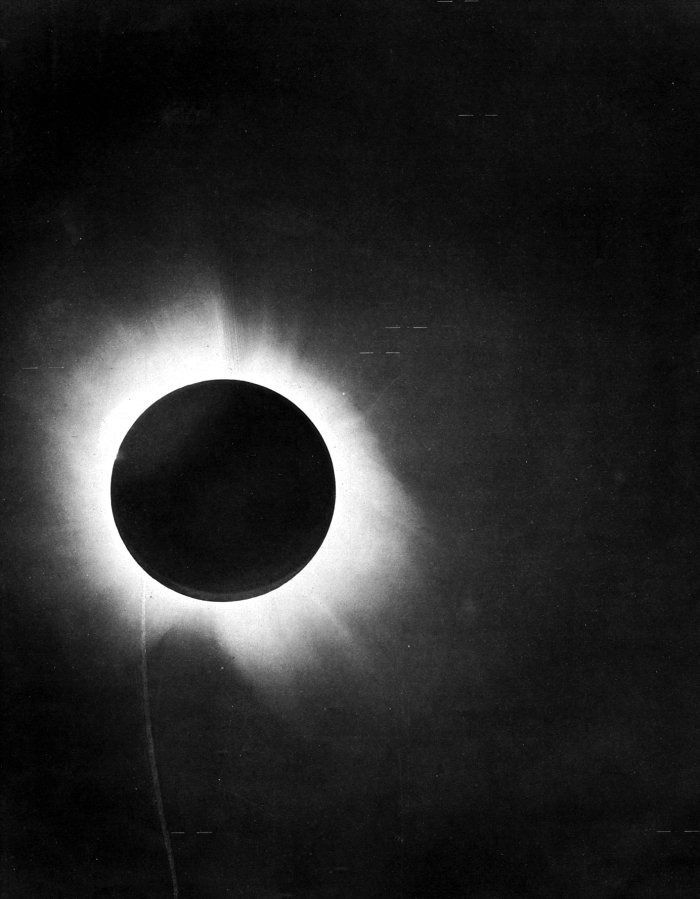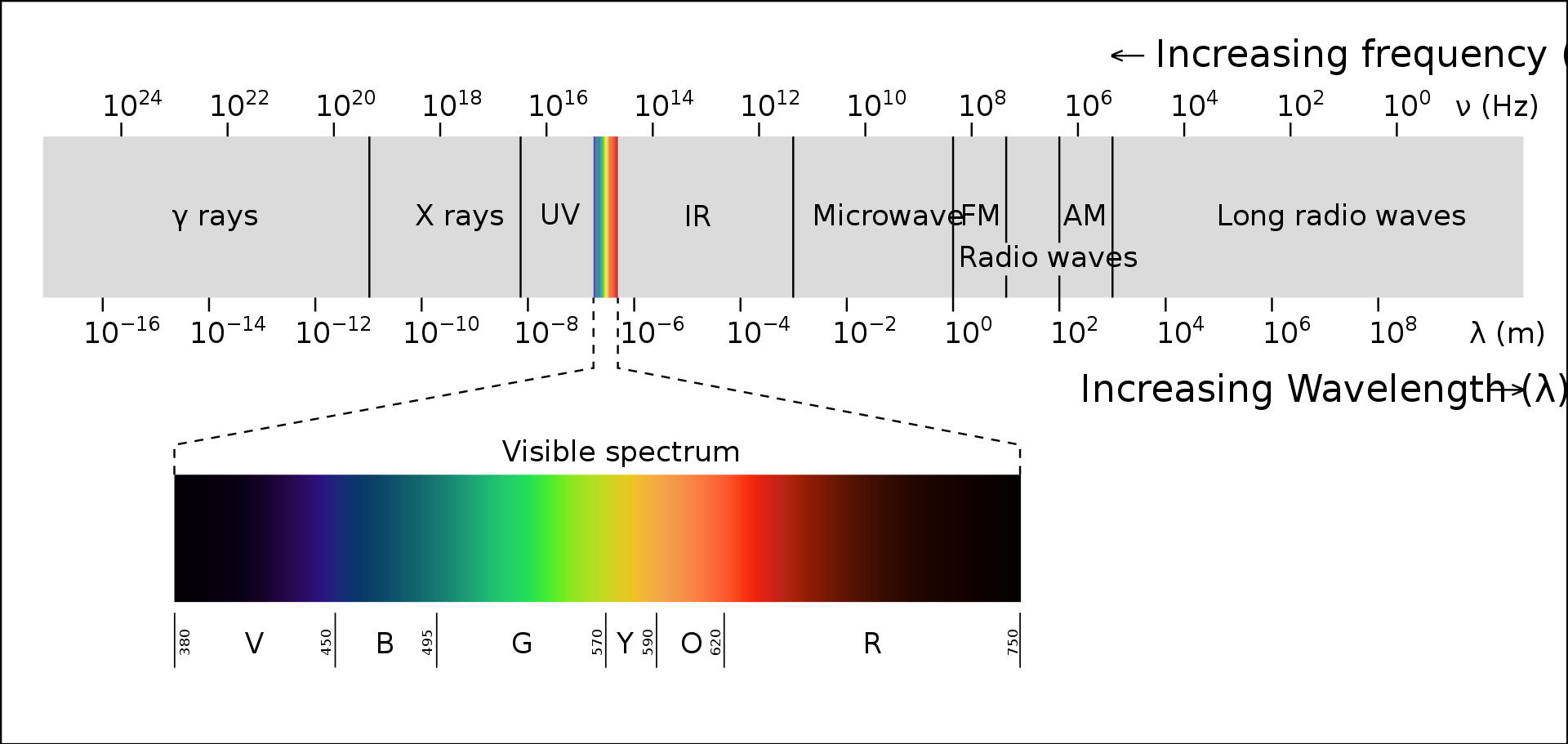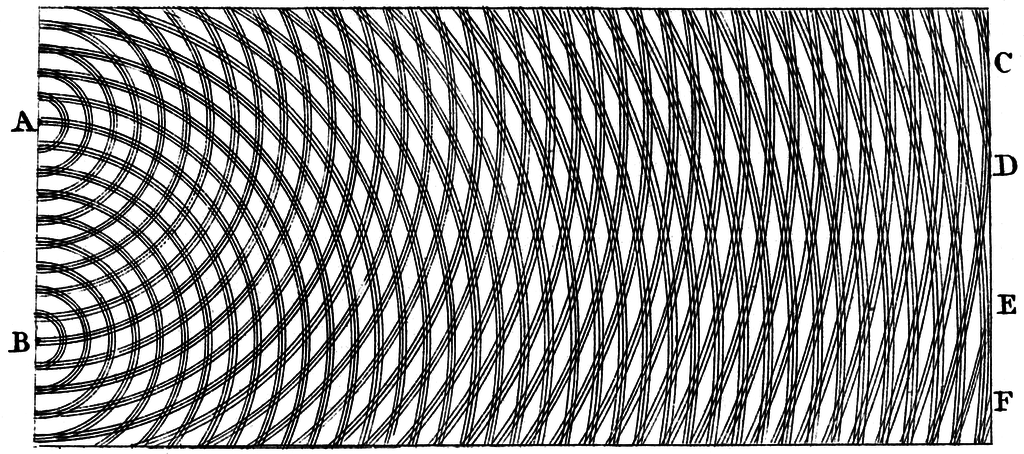Two mysterious things: light and gravity I

1.1. Light needs a medium for its travel?
Just as the old saying, "It is obvious that it looks like fire," light comes from a fire directly in front of us or far away from a distance of several dozen light years. Light is a electromagnetic wave, as is well known. As is often the case, light is representing the whole electromagnetic waves. What is an electromagnetic wave? It is a term that combines an electric wave and a magnetic wave that propagate as the intensity of the electric field (E) and magnetic field (B) changes vertically with the intensity fluctuating when light passes through the vacuum or a medium. In addition to visible light, radio waves, infrared rays, ultraviolet rays, and x-rays all belong to electromagnetic waves. The difference is due to the difference in the wavelength. The wavelength of visible light is near 500 nanometers (nm, 10-9 m) (see Figure 2). The energy of electromagnetic waves is large when the wavelength is short and small when the wavelength is long. The wavelength of electromagnetic waves used for radios or TVs is several meters, and x-rays for medical use belong to the high energy side.

Figure 1. The electric field (E) and the magnetic field (B) of light.
Denied virtual vacuum medium - Ether
Light has been almost completely theorized in the field of optics, and based on the theory, many optical devices and equipment have been developed and used in everyday life. The most distinctive feature of light is the fact that it propagates without any medium, unlike sonic or other types of waves. The speed of light in the vacuum is constant at ~ 300,000 km per second. Because of the nature of light being perfectly straightly propagate in the vacuum, in the 1600s Newton argued that light would be composed of particles and had been accepted as such for a considerable period of time. But since Huygens et al. proved the wave theory of light, light was gradually accepted as a wave. In 1801 Young observed the interference of light in a double-slit interference experiment. Subsequently, the wave theory of light replaced the particle theory.

Figure 2. The wavelength of visible light ranges from 400 to 700 nanometers (wikipedia.org).
Scientists who believed that light is a wave in the Newtonian era needed some medium in which light could wiggle and thought of "Ether" to be the medium. Ether is a hypothetical fluid that enables the fluctuation of light. In 1887, to demonstrate that Ether was really exist, Michelson and Edward Morley performed the famous "Michelson-Molly experiment".

Figure 3. A sketch showing the diffraction of a wave by a double slit of Thomas Young.
For this experiment, Michelson worked with Molly on a sophisticated optical device as shown in Figure 4 to observe the interference expected to appear due to the difference in the speed of light under the influence of Ether. When Earth rotates around the Sun and the flow of "Ether" should be felt differently in the parallel and in the perpendicular direction to the flow of Ether. If two beams of light move the same distance but in the two different directions, the speed of light of the two beams would be different, and it was expected that the interference pattern of light would appear. However, unlike the expectation, such a interference was not observed. Though more sophisticated experiments had been performed since then, the results were the same. There was no such a thing like "Ether" that could mediate the propagation of light. The experiments that attempted to confirm the existence of Ether rather denied it. As a result, light could travel in the vacuum without any influence of the vacuum itself, and was recognized as a dual nature with the characteristics of wave and particle as observed in the latter half of the 20th century (the particle characteristics of light, its quantization of energy, contributed greatly to the birth of quantum mechanics, the essence of modern physics). It is not a granular-like particle, but light has the characteristics of a particle in the sense that the energy of light is quantized. It is different from the particles of the Newtonian age.

Figure 4. Schematic of the interferometer developed by Michelson in 1881 (modified from the image of wikipedia.org).